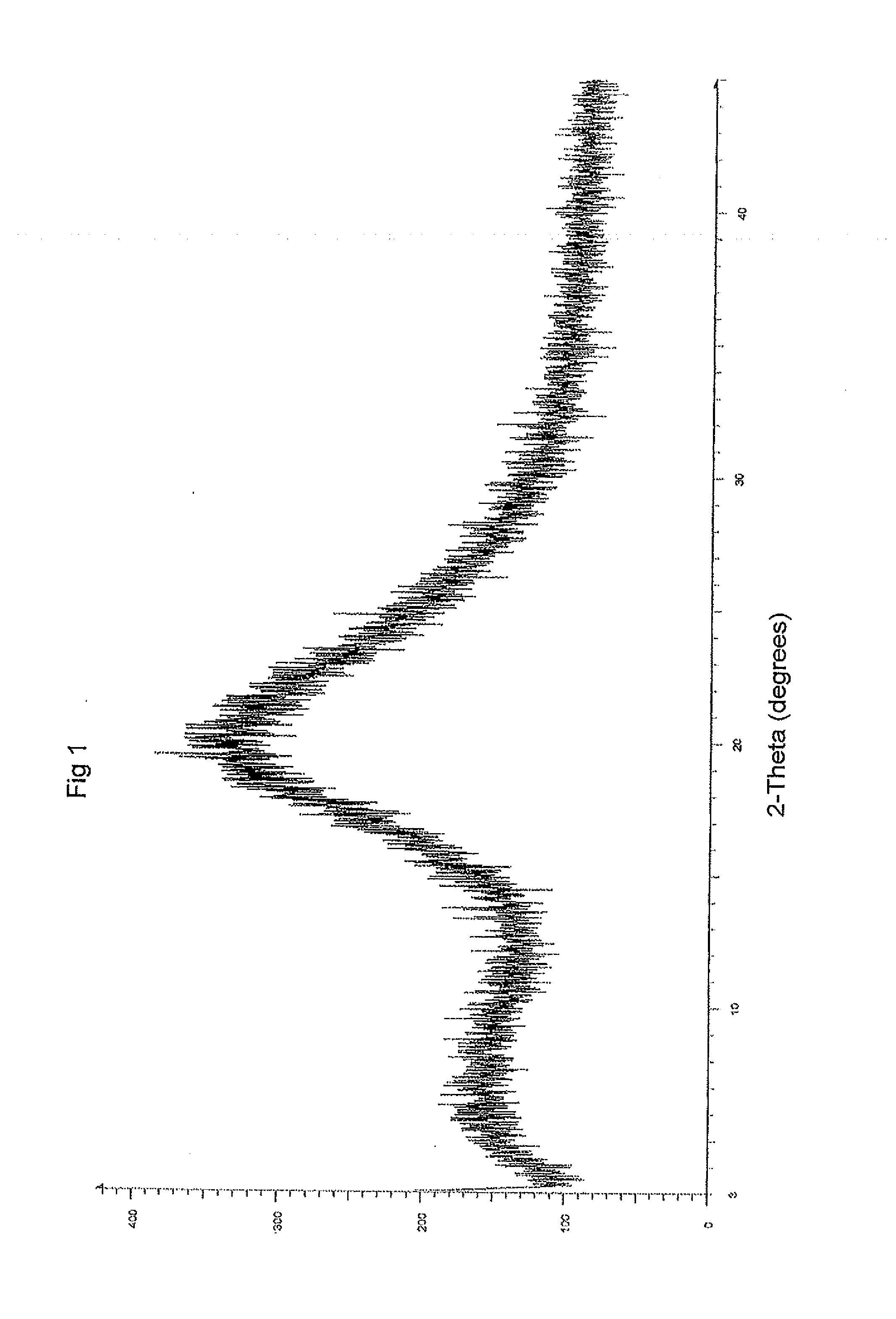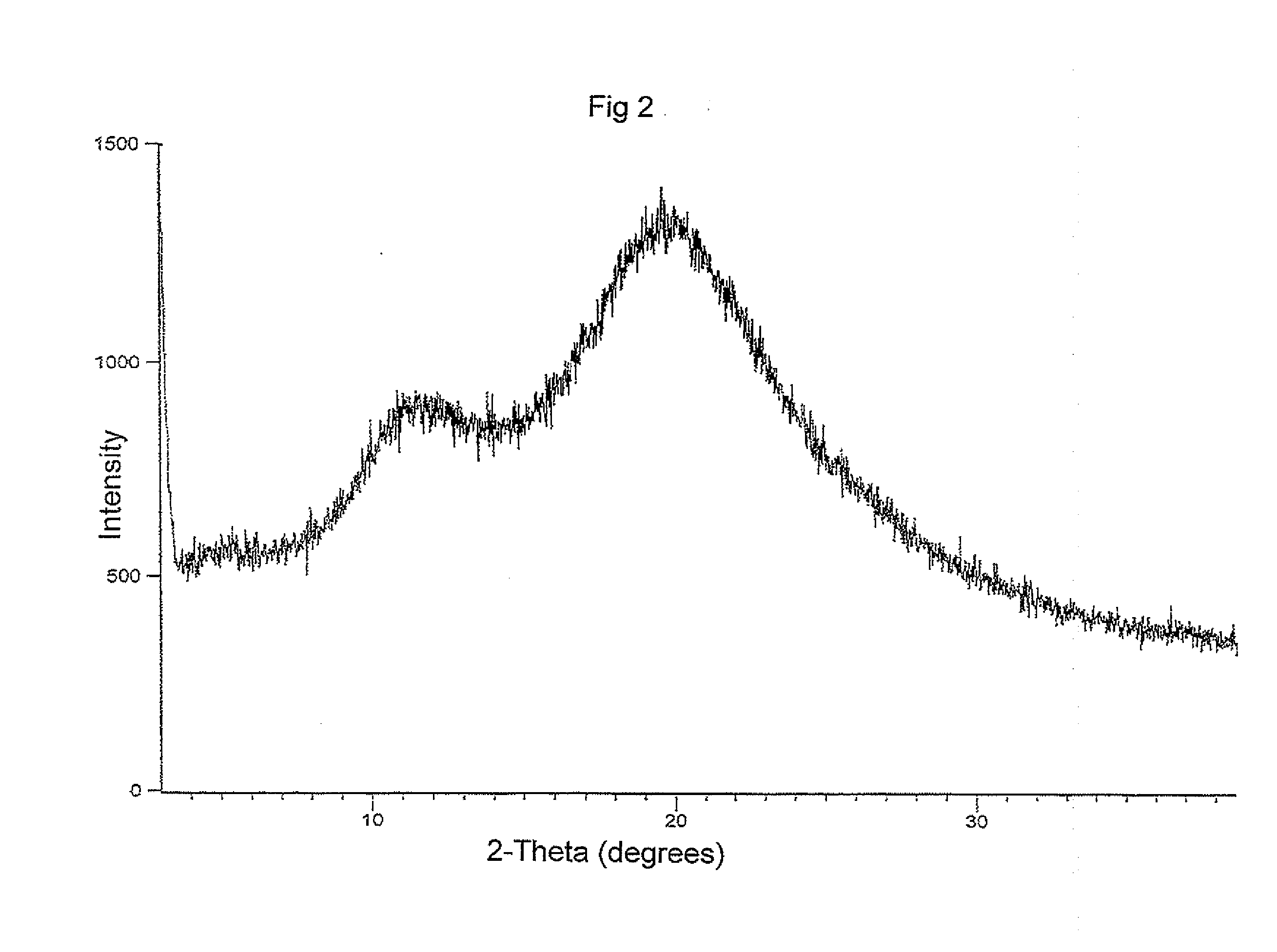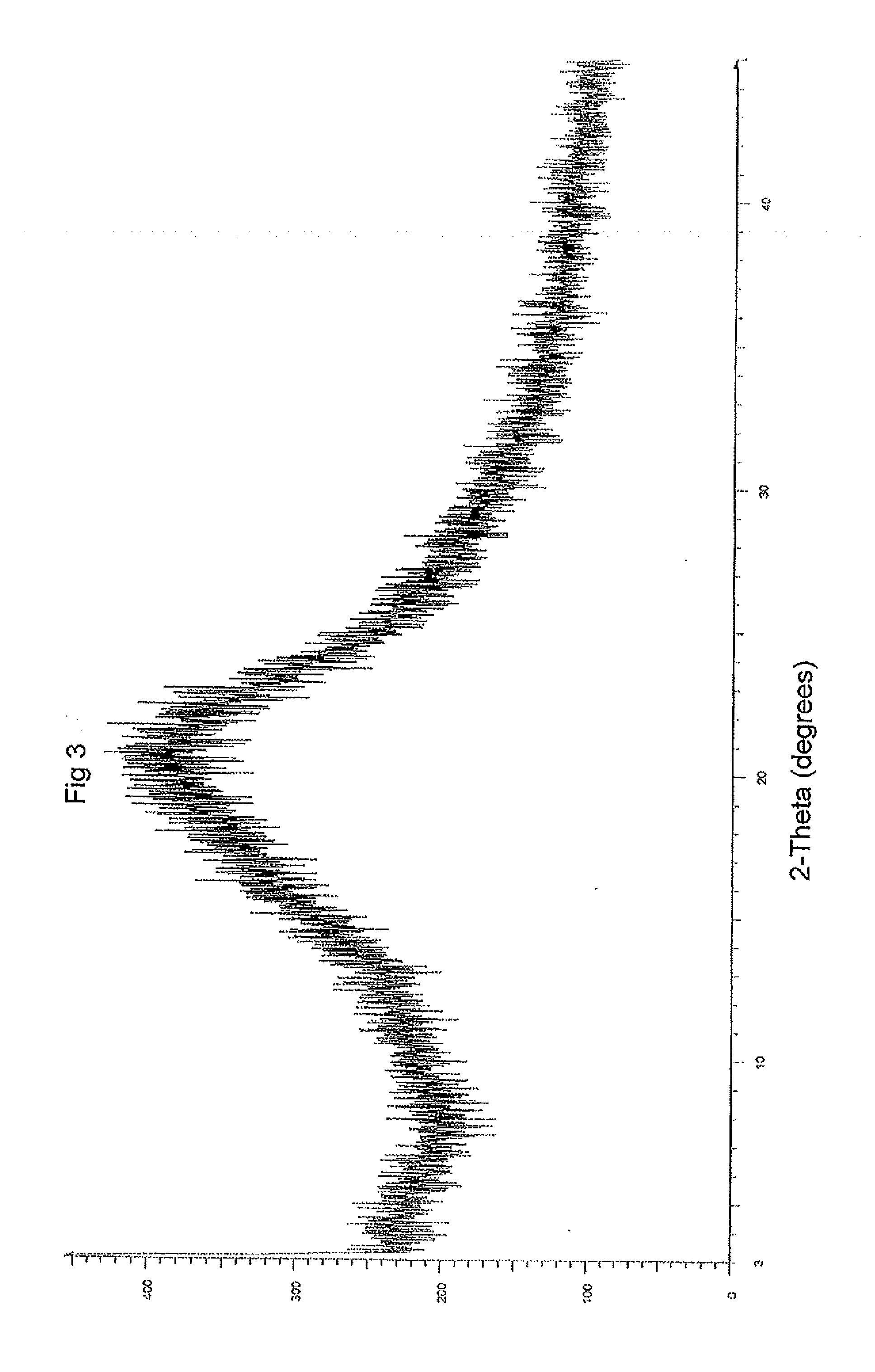Amorphous mirabegron and processes for crystal forms of mirabegron
a technology of mirabegron and crystal form, which is applied in the field of amorphous mirabegron and crystal form of mirabegron, can solve the problems of limited solvents, less yield, and use of seed materials
- Summary
- Abstract
- Description
- Claims
- Application Information
AI Technical Summary
Benefits of technology
Problems solved by technology
Method used
Image
Examples
example 1
[0249]Preparation of amorphous form of mirabegron: Mirabegron (1.0 g) and acetone (160 mL) were charged in to a round-bottom flask at 25-35° C. The contents were heated to 40-53° C. and stirred to dissolve mirabegron completely. The resulting solution was evaporated completely in Büchi® Rotavapor® at 40-45° C. under reduced pressure to afford 800 mg of the title compound. PXRD pattern is shown as FIG. 1.
example 2
[0250]Preparation of a solid dispersion of amorphous mirabegron with povidone: Mirabegron (500 mg) and 4-methylpentane-2-one (35.0 mL) were charged in to a round bottom flask at 25-35° C. The contents were heated to 70-75° C. and stirred to dissolve mirabegron completely. Povidone K-90 (500 mg) and n-heptane (90 mL) were charged in to another round bottom flask at 25-35° C. and stirred for 5-10 minutes. The reaction mixture was cooled to 5 to 10° C. Above obtained solution of mirabegron in 4-methylpentane-2-one was charged to the mixture at 5-10° C. and the reaction mixture was stirred for 10-15 minutes. The obtained solid was collected by filtration, washed with n-heptane (5 mL) to afford 1.10 g of the title material. PXRD pattern is shown as FIG. 2.
example 3
[0251]Preparation of a solid dispersion of amorphous mirabegron with povidone: Mirabegron (1.0 g) and acetone (160 mL) were charged in to a round bottom flask at 25-35° C. The contents were heated to 50-53° C. and stirred to dissolve mirabegron completely. The resulting solution was evaporated completely in Büchi® Rotavapor® at 40-45° C. under reduced pressure. Dichloromethane (180 mL) was charged to the reaction mass and stirred at 38-39° C. Povidone K-90 (1.0 g) and dichloromethane (50 mL) were charged in to another round bottom flask at 25-35° C. The contents were heated to 35-38° C. and stirred to dissolve povidone-K-90 completely. The resultant solution of povidone-K-90 in dichloromethane was charged to the above obtained solution of mirabegron in dichloromethane at 30-35° C. The reaction mixture was stirred at 30-35° C. for 10-15 minutes. The solvent from the mixture was evaporated under reduced pressure at 35-40° C. to afford 1.82 g of the title material. PXRD pattern is show...
PUM
| Property | Measurement | Unit |
|---|---|---|
| Dimensionless property | aaaaa | aaaaa |
| Dispersion potential | aaaaa | aaaaa |
Abstract
Description
Claims
Application Information
 Login to View More
Login to View More - R&D
- Intellectual Property
- Life Sciences
- Materials
- Tech Scout
- Unparalleled Data Quality
- Higher Quality Content
- 60% Fewer Hallucinations
Browse by: Latest US Patents, China's latest patents, Technical Efficacy Thesaurus, Application Domain, Technology Topic, Popular Technical Reports.
© 2025 PatSnap. All rights reserved.Legal|Privacy policy|Modern Slavery Act Transparency Statement|Sitemap|About US| Contact US: help@patsnap.com



